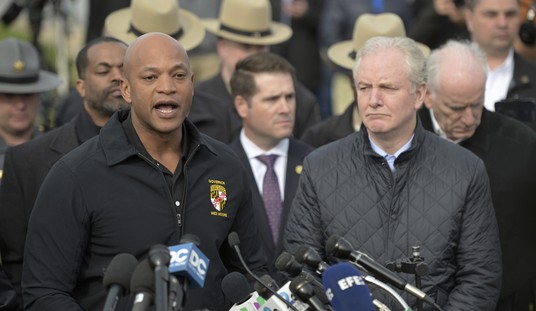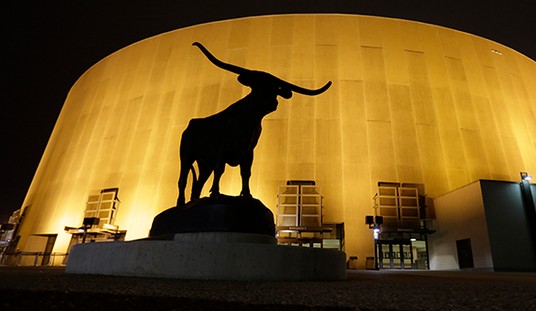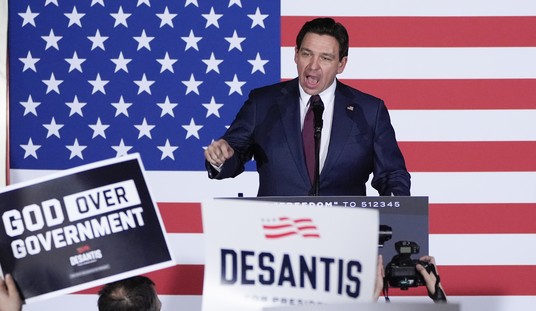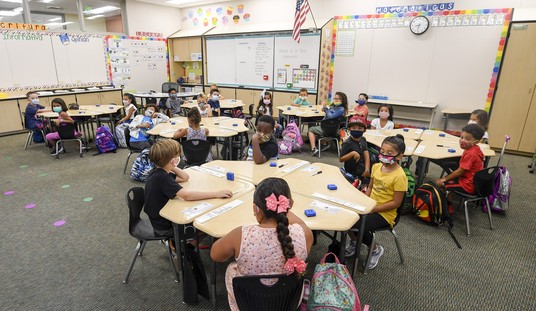Ten days ago, the Commerce Department released the latest evaluation of American economic growth, which came in at a paltry 1.8%, a steep drop from the unspectacular 3.1% in the fourth quarter of last year. By the time the weekend ended, that news got understandably swamped out by the successful military operation that killed Osama bin Laden. But even from Rome, I was surprised by the lack of attention that it drew before Sunday night, especially since the media showered the White House with favorable coverage of the previous quarter’s results.
In my column for The Week, I take a look at the report and what it says about Obamanomics — and the portents for Barack Obama’s re-election:
The first-quarter GDP growth rate plunged to 1.8 percent, a steep change from the previous quarter’s middling 3.1 percent growth rate. Even more ominously, imports increased by 4.4 percent vs. a 2010 fourth quarter decrease of 12.6 percent, and exports hit their lowest number (a 4.9 percent growth rate) since mid-2009. Meanwhile, personal consumption expenditures dropped from fourth quarter’s 4 percent growth rate to 2.7 percent.
The real story, though, comes near the end of the April Commerce Department report. Federal government spending dropped 7.9 percent after staying nearly even in the fourth quarter. National defense spending dropped 11.7 percent. That drop in spending explains why previous growth rates had been artificially inflated. It also explains why jobs have not returned.
Actually, it gets even worse than that. After accounting for inventory growth, real final sales of domestic product (GDP minus changes in domestic inventories) was 0.8 percent — barely above recession level. This indicates that even though sales of durable goods dropped from a 21 percent increase in the fourth quarter to 10 percent in the first quarter of 2011, businesses still overbought — which will negatively impact second-quarter orders and growth.
Obamanomics has run out of cash, and House Republicans are unlikely to give Obama another ATM card this year. The White House argument that a two-year spending spree would kick-start private growth has been shown to be entirely incorrect, and now we have even greater debt than we did before Porkulus. We are left with real growth that just barely exceeds a flat line, and given the regulatory and investment environment of the present, very little indication that we will see a sudden return to the 4-5% real growth range needed to get a massive change in unemployment.
Under those circumstances, Barack Obama’s chances of re-election appear rather dim. One might think that such a stall in the economy might interest a few people, especially given the political impact of near-zero growth outside of artificial stimulus in the ninth economic quarter of Obama’s presidency. Perhaps the media can spend a little time to discuss the impact of this report now that the OBL mission has been thoroughly dissected, but it doesn’t take a “gutsy call” to predict that the White House will keep feeding the media more on the OBL story to keep attention away from the sputtering economy.
Update: The Wall Street Journal notes even more bad news from the housing market, where home values dropped significantly in Q1, especially in March:
Home values fell 3% in the first quarter from the previous quarter and 1.1% in March from the previous month, pushed down by an abundance of foreclosed homes on the market, according to data to be released Monday by real-estate website Zillow.com. Prices have now fallen for 57 consecutive months, according to Zillow.
Last year, the housing market showed signs of improving as price depreciation slowed in some markets and stabilized in others. In response, a number of economists began forecasting that housing would hit a bottom in late 2011, then begin to recover. But the improvements, spurred by federal programs that gave buyers up to $8,000 in tax credits, proved fleeting. Sales collapsed when the credits expired last summer, and prices in many markets have been falling ever since.
While most economists expected sales to decline after tax credits expired, the drag on the market has been greater than many anticipated. “We expected December and January to be bad” as the market reeled from the after-effects of the tax credit, said Stan Humphries, Zillow’s chief economist. But monthly declines for February and March were “really staggering,” he said. They indicate “a reflection of the true underlying demand, which is now apparent because most of the tax credit is out of the system, and it’s being completely overwhelmed by supply.”
Mr. Humphries now believes prices won’t hit bottom before next year and expects they will fall by another 7% to 9%. Other economists revised their forecasts. In April, the chief economist at mortgage company Fannie Mae, Doug Duncan, said home prices in the second quarter would be 5.3% lower than the previous-year period, down from his earlier estimate of a 2.6% decline.
The housing market will trail rather than lead the recovery, as the main problem in that market is a lack of qualified buyers, thanks to high unemployment. Given the GDP numbers, we are a long way away from producing enough qualified buyers to put a dent in inventories.








Join the conversation as a VIP Member